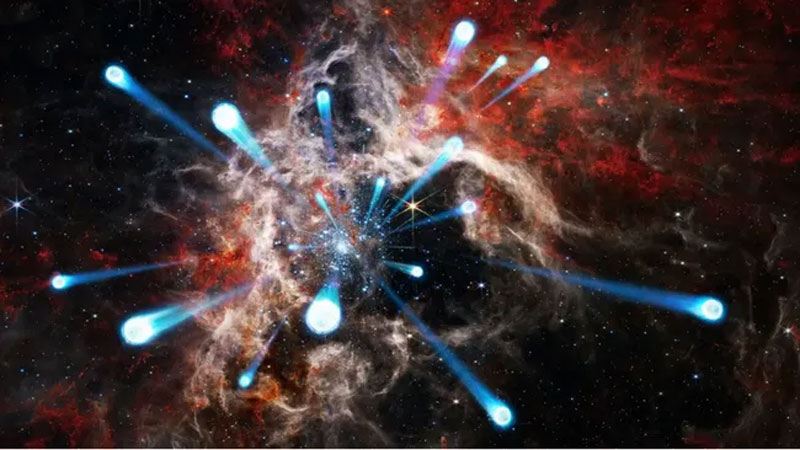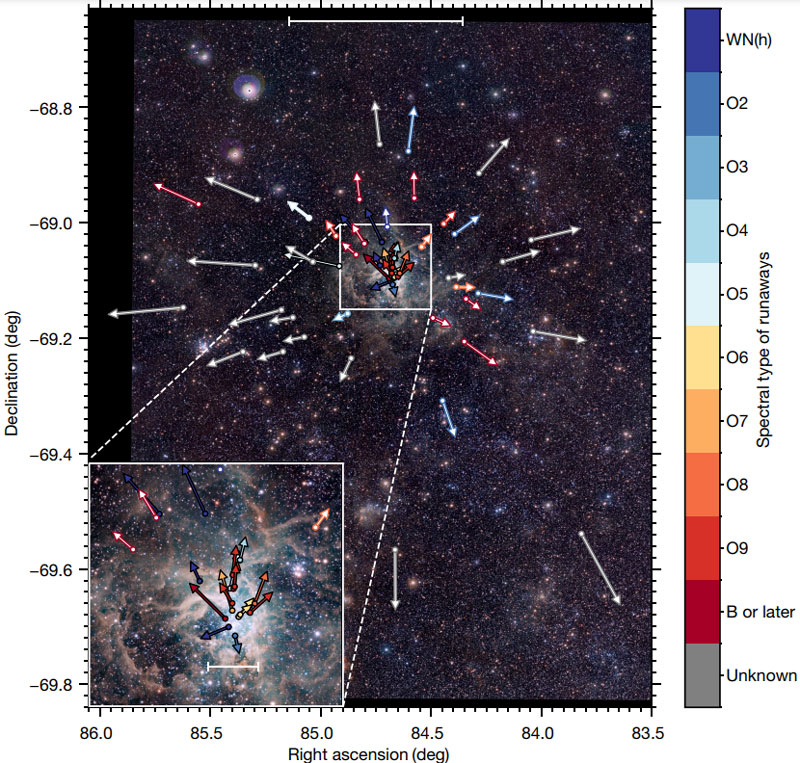New work by astronomers based on observations of the European astrometric satellite Gaia has revealed an underestimation of the influence of wandering stars on the evolution of the Universe. The study was aimed at assessing Gaia’s ability to create a 3D map of not only the Milky Way, but also neighboring dwarf galaxies beyond it. A study of stars in the Large Magellanic Cloud has discovered 55 “runaways” and their significant contribution to the ionization of the surrounding gas.

Artistic representation of fleeing stars. Image source: Danielle Futselaar, James Webb Space Telescope
The researchers observed one of the largest nearby star-forming zones, the Tarantula Nebula, and specifically studied stars in the relatively young cluster R136. This cluster is interesting because it contains the most massive star known today (R136a1), whose mass exceeds 200 solar masses. The cluster itself is approximately 2 million years old. It is 158 thousand light years away from Earth. The data collected by Gaia suggests that at least 55 giant stars are flying away from this cluster.
Astronomers have identified two waves of fugitives. The first begins counting approximately 200 thousand years after the start of the mass birth of stars in the cluster, and the second – after 1.8 million years. The first wave of stars is directed in all directions from the center of the cluster, which indicates a single launch mechanism, while the second formed a clearly directed vector in one (northern) direction. Scientists believe that the first wave of stars received acceleration, which threw them out of their native cluster, in the first thousand years after birth, when there was chaos in their orbits. The second wave could be triggered by the effect of the merger of the R136 cluster with another cluster, which occurred already at the stage of maturity.

Data on stars escaping from the cluster over 3 million years. Image source: Mitchel Stoop/Nature 2024
Upon reassessment, it turned out that up to a third of the most massive stars left their native cluster – this is more than the models predicted. The fugitives made a measurable contribution to the ionization of gas both in the nebula and outside it (as long as they had time to fly away): from 10% inside the number of the brightest stars and up to 20% outside. Until now, when predicting the evolution of the Universe, the contribution of runaway stars to the reionization of gas in the first billion years after the Big Bang has not been taken into account. Meanwhile, this factor could have a significant impact on the rate of development of stars, galaxies and the Universe itself.